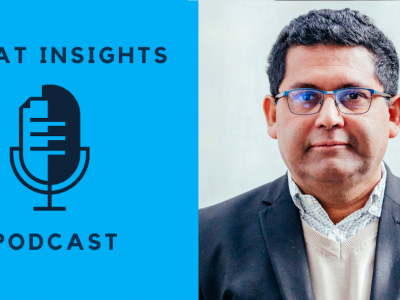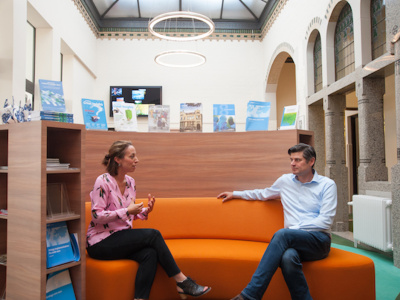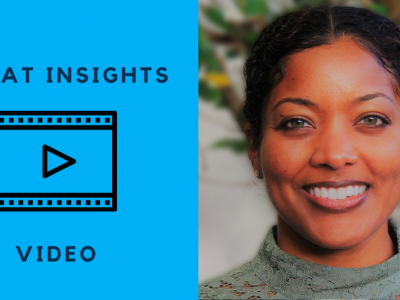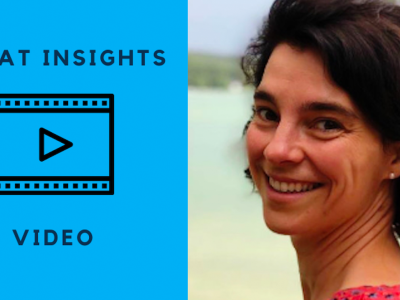
Financing the EU Green Deal: Putting Africa and adaptation higher on the agenda
The success of the European Green Deal depends on how it is translated internationally. The EU has the opportunity to raise the bar on adaptation financing and support for the most vulnerable, particularly in Africa.
The European Green Deal beyond EU borders
The EU is trying to position itself as a leader in combating climate change through its flagship European Green Deal. Despite the Green Deal being primarily a domestic plan, its success depends on Europe’s ability to support partner countries in their transitions towards a more sustainable future. As part of the Green Deal, the EU penned an adaptation strategy that, for the first time, introduces an international component.
The document recognises the strategic value of international climate resilience to Europe. It presents adaptation as a “crosscutting element in the EU’s and Member States’ external action, spanning international cooperation, migration, trade, agriculture and security”. Interestingly, the strategy focuses on Africa, small island developing states (SIDS), least-developed countries (LDCs), and fragile and climate-vulnerable contexts. It also says that the EU will employ its external financing to support adaptation in these geographies.
Adaptation features in Africa’s latest green recovery plan
African governments and financial institutions have increasingly prioritised climate change, especially adaptation. For example, in 2020, the African Development Bank invested about 62% (US $1.3 billion) of its climate finance in adaptation and 38% ($785 million) in mitigation. Though mitigation is important, adaptation is Africa’s greater need. Overall, developing countries have an adaptation funding gap of estimated $70 billion annually, with African countries among those expected to suffer the highest losses from climate change.
The African Union’s (AU) Green Recovery Action Plan 2021-2027 puts adaptation and resilience high on the agenda, especially as part of its climate-resilient agriculture and clean and resilient cities priorities. The plan notes that “COVID-19 does not change the urgency of addressing African (and broader) environmental challenges, but it has accelerated decision points that could have substantial impacts”. The AU highly encourages member countries to adopt the necessary post-COVID-19 recovery programmes that integrate solutions to Africa’s environmental challenges with promoting public health and prosperity.
The AU Green Recovery Action Plan, together with the Nationally Determined Contributions (NDCs) and National Adaptation Plans (NAPs), provide the EU with some direction on how to better work with African countries on climate. EU financing will yield greater outcomes if it embraces partnerships and builds strong synergies across regional and national action within Africa.
Opportunities for EU adaptation financing in Africa
The EU adaptation strategy aims to increase EU funding for adaptation and mobilise additional financing through member-states and other bilateral channels. To achieve this goal, the EU must harness all opportunities offered by the current EU financing architecture for development. Notably, the Neighbourhood Development and International Cooperation Instrument – Global Europe (NDICI-Global Europe), which is the principal instrument for EU external financing, focuses strongly on Africa. Of its €79.5 billion total, it allocates €29.2 billion to sub-Saharan Africa and €19.3 billion to the Neighbourhood (including the Southern Neighbourhood).
These figures mean that the EU’s climate and environmental action in Africa will need to make a substantial contribution to achieve the commitment of spending 30% of EU external financing on climate change and the environment. That target applies to the whole EU budget, as does the principle of aligning all financing with the Paris Agreement and the “do no harm” principle.
The NDICI-Global Europe also includes the External Action Guarantee (EAG) and the European Fund for Sustainable Development Plus (EFSD+). In line with the EU adaptation strategy, the European Commission intends to use the EFSD+ to leverage additional resources from private and public sources, including EU member states, to further support adaptation among SIDS and LDCs. However, striking a better balance between mitigation and adaptation financing and increasing support for poorer and more fragile contexts are two of the biggest challenges ahead.
Increasing EU funding for adaptation and LDCs
The European Commission has traditionally maintained a good record on adaptation financing, though wider EU financing has performed less well. In 2020, just 23% of European Investment Bank (EIB) investments (US $740 million) went to climate adaptation, versus the much higher share of 77% ($2.5 billion) that went to climate mitigation in low and middle-income countries. Similarly, the European Bank for Reconstruction and Development (EBRD) invested about 21% ($481 million) of its total climate finance in adaptation, relative to the 79% ($1.8 billion) invested in mitigation. Both institutions will play a crucial role in delivering on the external objectives of the European Green Deal and have raised their climate ambitions accordingly.
While interest in adaptation financing is growing, shifting resources requires European financing institutions for development to evolve their portfolios to include adaptation projects. Typically, these offer less appealing returns, longer time horizons and less certain risk profiles than mitigation actions. Still, the requirement for these actors to better align their activities with EU priorities is high. Opportunities could lie, for example, in the financing of resilient infrastructure. Use of de-risking mechanisms, such as guarantees, technical assistance and better risk assessments can also help.
To scale up financing for the countries most in need, and overcome some of the bottlenecks, the programming of EU external resources needs to be more centred on national priorities – and on country adaptation plans. In parallel, European actors need to cooperate more decisively to mobilise low-cost climate adaptation finance, especially for SIDS, LDCs and other climate-vulnerable countries, including through the EFSD+. The European Commission has a better track record in financing LDCs than other European actors. Still, following a global trend, most of European climate financing goes to MICs.
Strengthening a climate justice approach
There is space for the EU to integrate a climate justice approach into its external action. Looking ahead, the integration of such a perspective into climate change interventions would raise their impact, while aligning with the SDGs and the commitment to leave no one behind. It would also raise the EU’s credibility as a leading climate actor. In Africa, this could translate into a focus on vulnerable groups, including youth and women, many of whom work in subsistence agriculture and have been heavily affected by COVID-19 and the associated lockdowns.
There are policy and political opportunities to keep the bar of ambition high and make deeds follow words at the implementation point. The EU-Africa Summit and COP26 are two key moments ahead to embrace strong partnerships between the EU and Africa for a better green transition and to scale up ambitions for financing adaptation in Africa. Still, the ongoing collaboration that will take place afterwards may matter even more in the end. Climate features strongly among African and EU priorities, including Team Europe initiatives. These flagship collaborations, which involve the EU institutions, EU member states and EU financing institutions, can lend visibility and impact to EU external action. Ensuring that adaptation and climate justice are part and parcel of EU external action, in EU programming documents and in subsequent annual action plans will be crucial. Such policy level priorities also need to be embraced in the financing choices of the implementing partners –– EU financial institutions such as EIB and EBRD, especially through increased investments in adaptation. Similarly, working closer with country stakeholders and the intention to support national plans will be as important.
About the authors
Mariella Di Ciommo and Pamella Eunice Ahairwe work at ECDPM as Policy Officers, respectively in the European External Affairs programme and in the Trade, Investment, and Finance programme.
Read the full magazine issue
This article appears in the climate edition of ECDPM's Great Insights magazine – check out the full issue or the other articles and multimedia below.
















